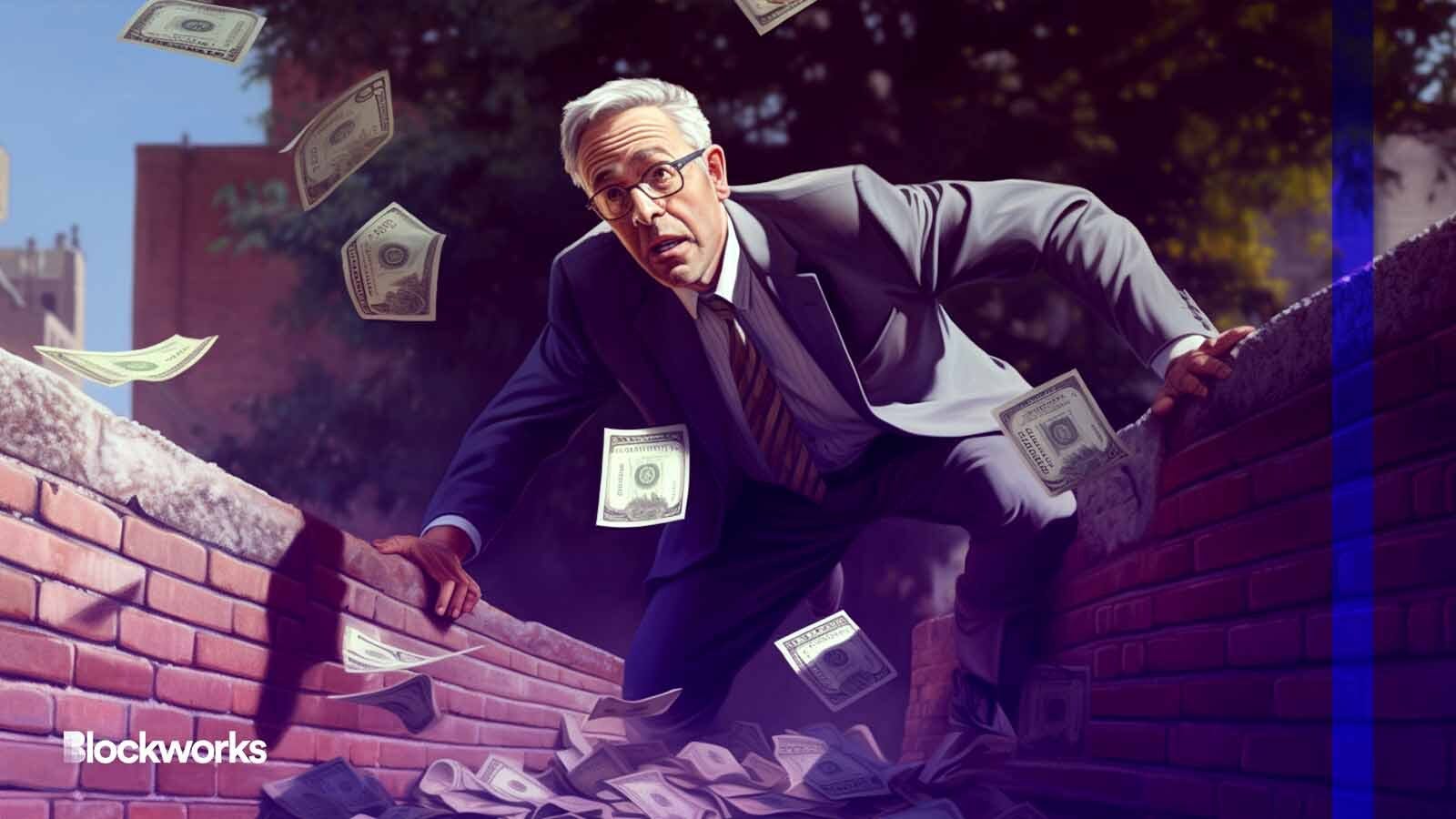The Fed feels it has no place left to go — except to monitor crypto
If DC can’t make up its mind, at least the Fed’s latest move shows it respects crypto as an inevitable part of the economy

Midjourney modified by Blockworks
Some may see the Federal Reserve’s latest crypto program as evidence that the institution is a co-conspirator in Operation Choke Point 2.0.
I think it’s much more likely that the decision to expand oversight of banks’ crypto activities is a reflection of a federal agency that believes it has no place left to go. What else can the Fed do with crypto, really, in light of Washington’s continued failure to institute a comprehensive crypto asset framework? Not to mention the continued uncertainty of the entire financial system.
While few, if any, in crypto celebrated the move, the Federal Reserve’s decision does likely signal that it understands crypto’s durability.
From Mt. Gox to FTX’s downfall, the crypto ecosystem endures. It’s a fact that bedevils its opponents and makes their attempts to ban or fit it like a square peg into the round hole of modern securities law more confounding.
The Federal Reserve’s recognition of crypto’s durability is not the federal government’s first. President Biden’s executive order on digital assets and the Treasury Department’s work on stablecoins prove that DC sees crypto as an enduring part of the economy.
However, the federal government’s repeated recognition of crypto’s durability is cold comfort for market participants forced to deal with the downstream consequences of the Federal Reserve’s latest decision, which are severe.
The sector has had a target on its back since January 2023, when the Federal Reserve, the Federal Deposit Insurance Corporation and the Office of the Comptroller of the Currency issued a joint statement outlining the risks they believed crypto assets posted to the banking system. Intended or not, the statement was a clear signal to banks that they should avoid doing business with crypto market participants.
That signal and the target have only grown louder and larger with the Federal Reserve’s latest action.
While some actors in the federal government are reflexively anti-crypto, my experience working with the Federal Reserve when I served as senior spokesperson at the US Department of the Treasury during the first half of the Biden Administration is that the Federal Reserve is not among them.
Concerns about crypto? Yes. More skeptical of crypto assets than the average crypto supporter? Sure. And yes, there were confounding steps, like rejecting Custodia Bank’s application to become a member of the Federal Reserve System.
But by and large, during fourteen years of service in Congress and a presidential administration, the Federal Reserve staff I interacted with had a unique integrity and an almost moral aversion to letting their personal beliefs impact their decision-making.
While the Federal Reserve is an upstanding institution, it is also inherently conservative — not in a political sense, but in the way one who forever saves the first dollar they ever made might be called conservative. They are in the risk management business, and yesterday’s decision to begin a Novel Activities Supervision Program gives observers insight into how they chose to balance two risks: One to the crypto asset ecosystem and another to the overall economy.
Read more from our opinion section: Congress takes a serious swing at crypto legislation
Crypto assets present risks that both supporters and concerned potential naysayers, like the Federal Reserve, will acknowledge. But despite what crypto’s opponents claim, crypto assets are not prohibitively risky, but instead currently possess inherent risks due to DC’s failure to implement a comprehensive regulatory framework. The Federal Reserve can’t solve this problem alone. While Congress is making progress on a crypto regulatory framework, opposition from opponents like Senator Elizabeth Warren has made progress halting and uncertain.
The Federal Reserve has to balance the current (slipshod) state of regulation with another risk that has receded from public view, but is still an ever-present threat to financial stability: Asset-liability mismatch in the banking sector, which is further heightened by increasing interest rates.
And in balancing the threat of the destabilizing impact that another round of Silicon Valley Bank-like runs could have on financial stability vs. the severe downstream consequences of incentivizing the de-banking of crypto market participants, the Fed has chosen to solve for the former — armed with the knowledge that crypto (seemingly no matter what) keeps on keeping on.
That the Federal Reserve would choose to mitigate banking system risk instead of protecting the ability of crypto market participants to access the banking system should not come as a surprise. The Federal Reserve said as much in a previous joint report which noted, in part, that an unraveling of the crypto ecosystem would not necessarily put the entire financial system in danger.
With DC continuing to go in circles on crypto policy, the Federal Reserve found itself stuck in a stalled, overweight elevator. It looked left and saw more interest rate hikes in the future. Right, and banks with potentially problematic balance sheets. Unfortunately for the crypto sector, the Federal Reserve decided to send the elevator down.
Get the news in your inbox. Explore Blockworks newsletters:
- The Breakdown: Decoding crypto and the markets. Daily.
- 0xResearch: Alpha in your inbox. Think like an analyst.






